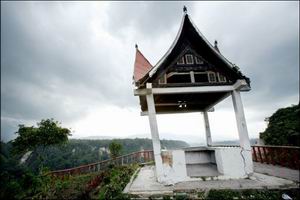Quake Affects Tourism: Bukittinggi, Sumatra
 As Sumatra seeks to pick up the pieces after a deadly quake, the local tourist industry near its epicentre on the Indonesian island is struggling to recover its lustre.
As Sumatra seeks to pick up the pieces after a deadly quake, the local tourist industry near its epicentre on the Indonesian island is struggling to recover its lustre.
The scenic town of Bukittinggi is particularly badly hit, with attractions closed down for safety reasons and a tourist market that is now in ashes according to AP sources.
Residents said they feared it could be months before tourists return to the town after Tuesday’s 6.3-magnitude quake, estimated to have killed 73 people, damaged one of the area’s biggest attractions, a panoramic lime canyon.
The Ngarai Sianok, which includes a series of caves used by the Japanese in World War II as well as the “1,000 steps” — a long staircase descending to a valley — had to be temporarily closed after it partially collapsed, burying a young boy.
Safety concerns also led to the closure of a park with tremendous views of the canyon.
To make matters worse, Bukittinggi’s tourist market, where visitors could buy handmade souvenirs and local delicacies, burned down when the quake caused a stove to catch fire.
At the busy Pasar Ateh commercial street, shops were open but business was slow. Foreign tourists, normally a common sight, were nowhere to be seen.
Town authorities asked all hotels to close, fearing for residents’ safety if more earthquakes hit. But officials said they were scheduled to reopen Monday.
Indonesia, an archipelago of around 17,000 islands, sits on the so-called Pacific Ring of Fire, where continental plates meet, and where earthquakes are a regular and often deadly occurrence.
The devastating Asian tsunami in 2004 was set off by a massive earthquake off the coast of Sumatra, killing some 168,000 people in Aceh province on its northern tip.